Optimizing Your At-Home Training and Overall Wellness
Written By: Bo Pearson, CSCS
At-home training. Remote learning. Virtual events. Zoom. Facetime. Google meets. We are living in times that require alternative tools and strategies in order to reach the goals we have for ourselves and our athletes.
Recently, we delivered a talk titled “Training in the Era of COVID-19”, as part of Football Canada’s Kickoff, Grow, and Innovate in Sport campaign. The overarching ideas of this presentation included:
-
10 Questions for a Clearer Path Forward
-
Why “Keeping it Real” is the Best Strategy
-
Considerations for “At-home Training” Design
-
Return to Sport: Too little, too much, or just right?
These ideas are based on the practical experience of hundreds of conversations with the thousands of athletes, coaches, and PE teachers that we serve each and every day at Volt, and the following article will briefly discuss each idea. Check out the whole talk below:
10 Questions for a Clearer Path Forward
It’s hard to hit a target you can’t see, and the consistent barrage of new information being passed down from our national and local leaders makes the future of sport and competition foggy at best. In situations like these, it’s best to create a strategy based on the information you know to be true and the factors that are within your control.
These 10 questions are intended to serve as a template for helping any athlete (or coach) get the most out of their “COVID-19 Off Season,” and can be repurposed to create a team or personal development track at any point in time:
Questions 1 – 3:
-
What type of athlete do I need to be next season?
-
What type of athlete am I now?
-
How much time do I have until my season?
Focus the athlete’s attention on his or her self, rather than the external chaos. The answer to question #3 might be uncertain, so we recommend sticking with the most updated information that you have available to you (knowing that the information might change). If/When your timeline changes, this framework will make adapting your plan much easier.
Questions 4 – 6:
-
What will my training environment be like?
-
How can I improve my training environment?
-
How much time can I dedicate to training?
Address the athlete’s training environment, which may significantly impact the goals that an athlete chooses and the methods they use to achieve those goals.
Questions 7 – 8
7. What are my developmental targets?
8. What’s my training plan?
These question lead us towards creating a specific plan for our off-season. Again, the development targets we choose and the training plan we construct may be limited by our training environment. For example, it wouldn’t make much sense for an athlete to focus on increasing Maximal Strength if they lack weights in their training environment. Likewise, it might be tough to increase sprint speed if an athlete is going to have snow on the ground for the next 6 months and no access to an indoor track or fieldhouse.
Questions 9 – 10:
9. What could get in my way?
10. How can I overcome those obstacles?
These final questions are all about seeing as far down the road as possible, identifying threats to your plan, and forming strategies to conquer those obstacles. As mindset coach and author, Collin Henderson, likes to say, “Everything happens twice, first in our mind then in real life.”
Why “Keeping it Real” is the Best Strategy
Coaches will probably help answer several of the previously presented questions for their athletes and are encouraged to “keep it real” with their expectations. It’s usually best to aim for the lowest common denominator when it comes to motivation, and a desire to train if you are the one creating the plan for your team. Athletes with greater motivation and/or access to training facilities are likely to be outliers and can be managed in a more customized way.
If you normally train four times per week with your team, consider reducing that to two or three in order to set a more attainable goal. It’s more motivating to consistently execute 3/3, 3/3, 3/3 of your workouts for three weeks in a row, versus going 4/4, 2/4, and 3/4, even though the total number of workouts completed is the same in both cases.
“Keeping it Real” not only means setting appropriate expectations–it means communicating those expectations clearly! One of the most effective strategies coaches can implement (in-person or remote) is to specify a time and place for workouts to be completed. Why is this so effective? Because our athletes are not used to creating their own schedule. Think about it…back when we were all meeting in-person, the time between when athletes get to school and when they finish their practices at school (or even outside of school) had mostly been planned for them. Coaches can help out by specifying times in which training should occur. You might not get those times to align with everyone’s schedule, so aim for the most common denominator and work case-by-case (as you are able) with outliers.
Considerations for At-home Training Design
If there’s a single guiding principle that I’d like to emphasize, it’s this:
Focus on what you CAN do.
For example, if you have access to equipment but space is limited, you will likely train with weights to develop strength and power during your off-season. If you have less equipment but plenty of space, you probably won’t focus much on strength but instead, focus on developing work capacity with circuit training and incorporate more jumping/throwing/sprinting as a means of developing power and speed.
And here are the factors that are ALWAYS within your control:
-
Mobility
-
Nutrition
-
Sleep Hygiene
-
Mental Skills
-
Stress Management
-
Consistency
As a coach, here’s how you can help set your athletes up for success with their remote training. First, determine who has access to equipment. After establishing equipment and no-equipment groups, set up two separate programs for those groups and (if you’re using Volt) let athletes adjust movement selection in their programs based on the equipment they have access to.
If you want to segment your group further, ask both groups if they have access to approximately 60 yards of space for short and medium distance sprinting. After this, you’ll have four groups:
-
No equipment, no space
-
No equipment, some space
-
Some equipment, some space
-
Some equipment, no space
Dividing athletes into similar groups based on equipment and/or space availability PLUS providing them with alternative options is a great way to individualize programming without having to start from scratch with each individual on your team.
Return to Sport: Too little, too much, or just right?
First, let’s take a quick reality check with a quote from our Head of Sport Science, Dr. Joe Eisenmann:
“As athletes come back to the playing fields, gyms, and weight rooms, they are coming back in all shapes and fitness levels. Some have transformed their bodies through internal motivation, support from their coaches and parents, and perhaps access to good equipment or creative resourceful of other implements (logs, bricks, sandbags, etc.) to challenge the body. And yet others…tried to defy physiology and ignored the concept of detraining or ‘use it or lose it’, and are back to square one or maybe even minus square one.” -Dr. Joe Eisenmann, Head of Sport Science at Volt
Case Study
“Too little” training exposure can certainly lead to a higher likelihood of non-contact injuries, as on-field/court/pool/etc volume starts to significantly increase. If the body has not been conditioned to handle the demands of competition, it’s more likely to break once it’s placed in that environment. To see a notable example of this, check out this case study from the 2011 NFL Lockout season.
Floor, Ceiling, and Time
But we also can’t drive athletes into the ground when they show up for the first day of practice. Too much too soon during training can have the same result as starting your season without adequate ramp-up time (read more here). Instead, athlete workloads must be built-up over time in order to develop (or re-condition) the ability to handle that stress. How do we make sure to provide athletes with enough training exposure without pushing them too hard? Consider the Floor, Ceiling, and Time concepts, presented by sport scientist Dr. Tim Gabbett, to help guide training design and practice planning.
To quote the article: “The floor represents the athlete’s current capacity, whereas the ceiling represents the capacity needed to perform the specific activities of the sport. A challenge in most sporting environments is the time required to progress from the floor to the ceiling. If athletes’ training loads are progressed too rapidly, they will be at increased risk of injury and underperformance.” Basically, you need to get from your Floor to your Ceiling in order to minimize risk of injury. Getting there takes Time. When there is not enough time to get from Floor to Ceiling, athletes are exposed to increased risk of injury. You cannot shorten the Time variable. Effective alternatives are to raise your floor by starting your training sooner (or staying in shape during the off-season) or push your Ceiling target back to give yourself more time to progress.
50/30/20/10 Rule
Another complimentary approach to structuring Return to Sport is the 50/30/20/10 Rule as recommended in the CSCCa and NSCA Joint Consensus Guidelines for Transition Periods: Safe Return to Training Following Inactivity paper. The 50/30/20/10 refers to the recommended percentages of weekly volumes and/or workloads for conditioning in the first 2-4 weeks of return to training following inactivity, per Dr. Adam Virgile.
We (at Volt) are getting new information and ideas every day during our conversations with athletes, coaches, and teachers all over the world. And just like all of you, we’re hopeful that sports will return soon. As we move forward, new and interesting challenges are sure to arise, and the Volt Family will continue to find creative solutions for setting themselves up for success!
We might not know exactly when sport seasons will start back up again, but we’re confident that the Volt Family will be ready when the time comes!
Join over 1 million coaches and athletes using Volt’s intelligent training app. For more information, click here.





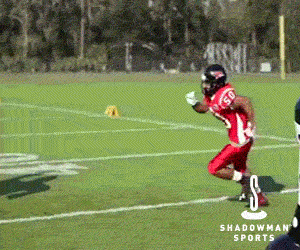
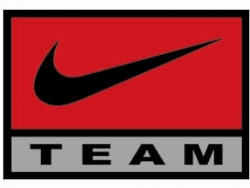


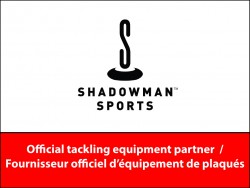


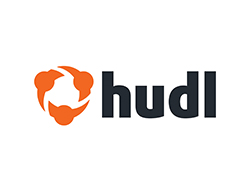








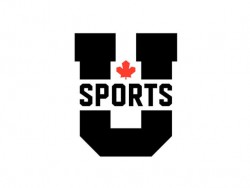









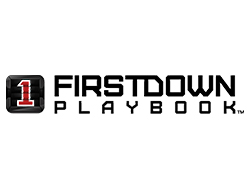



 Check your NCCP Certification
Check your NCCP Certification